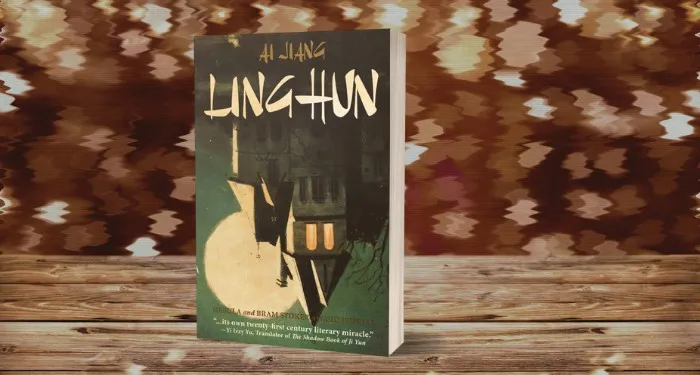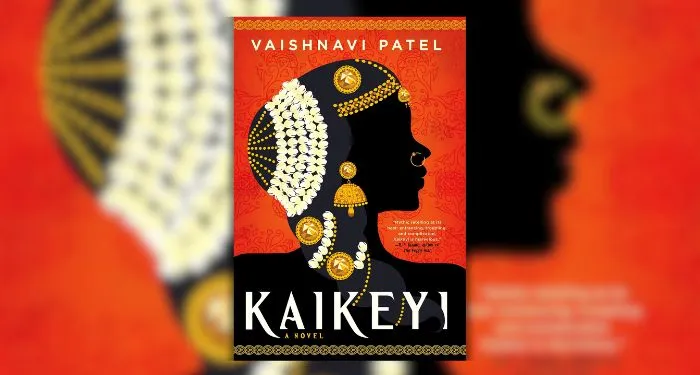“We limit the comely parts of a woman to consist in four points, that is, to be a shrew in the kitchen, a saint in the church, an angel at the board, and an ape in the bed,” the poet and courtier George Puttenham observed in The Arte of English Poesie (1589), an influential early modern treatise on rhetoric and poetics. Like all good humanists, Puttenham had an answer for those who might question what ethics—labeling women angels or shrews—had to do with literature. In his view, drawing on Aristotle, a poet’s ability to write well rested on the strength of his moral understanding. “The good maker or poet,” he explained, “ought to know the comeliness of an action as well as of a word.”
But shrewish women crop up many times in The Arte of English Poesie, in incidental as well as substantive places. To illustrate the rhetorical figure of antanagoge (turning a negative into a positive), Puttenham quotes a husband’s jaded assessment of marriage: “I must needs say that my wife is a shrew,/But such a huswife as I know but a few.” To explain antitheton (juxtaposing contrary ideas), he offers what he calls a “merry epigram”:
My neighbor hath a wife, not fit to make him thrive,
But good to kill a quick man, or make a dead revive….
Bid her be still, her tongue to talk shall never cease;
When she should speak and please, for spite she holds her peace;
Bid spare and she will spend; bid spend she spares as fast;
What first ye would have done, be sure it shall be last.
Puttenham wasn’t exceptional. In The Arte of Rhetorique (1560), one of the earliest critical treatises in English, the diplomat and privy councillor Thomas Wilson illustrated the figure of amplification (exaggeration) with a handy example: “To call a woman that hath made a scape [a breach of chastity], a common Harlot.” The prize for the nastiest rhetorical comparison belongs to the theologian Dudley Fenner. Metaphorical language, Fenner wrote in his manual The Artes of Logike and Rethorike (1584), “must be shamefaste, and as it were maydenly, that it may seeme rather to be ledde by the hande to another signification, [than] to be driven by force unto the same.” Good metaphors are blushing and tractable; bad ones have to be coerced.
The sexualization of poetics in the early modern period made rhetoric a complicated thing for female writers to master. Literary or scholarly ambitions exposed them to comment, mockery, and slander. “Men will cast a smile of scorne upon my Book,” the writer and philosopher Margaret Cavendish observed in 1653. “They think thereby, Women incroach too much upon their Prerogatives; for they hold Books as their Crowne…by which they rule, and governe.” Venturing into print, rather than confining work to manuscript, was particularly risky in view of the long-standing misogynist association between chastity and silence. But the idea that women might not only learn to use the tools of rhetoric but theorize them too was another matter. Writing on poetics—what we would call literary criticism—involved the display of knowledge and the exercise of authority, and these were questions of power.
Critical authority was gendered. Only men had “access to formal education, hence knowledge of Greek, Latin, rhetoric, and the highly codified interpretative and critical practices developed by humanist scholars,” in the words of the literary scholar Elizabeth Guild.1 Excluded from grammar schools, universities, and civic forums, women could neither learn nor practice the rhetorical skills that formed the basis of critical reading and writing. Exercising judgment—the Greek word kritikos means “he who is capable of judging”—was understood as a public business, and rhetoric meant specifically public speaking; women’s proper province was the home, the private sphere.
Those who received an education from fathers or private tutors were effectively equipped for a world they could not enter. (“Education for what?” the historian Lisa Jardine asked in a 1983 essay on the privately taught humanist Isotta Nogarola.) In her 1664 collection of essays and observations, Sociable Letters, Cavendish dramatized her exclusion from the court of literary judgment: “I am not a Learned, or Supreme Judg, yet I am an Inferiour Officer in the Poetical Court, and therefore not altogether Ignorant in Poetical Causes or Cases,” she tells an interlocutor. “But, Madam, I am in a Dispute with my self, as whether it be Warrantable for me, a Private Person, to give my Judgment in so Publick a Cause.”
By the seventeenth century aristocratic women such as Cavendish were increasingly able to participate in literary culture as poets, playwrights, translators, patrons, and readers. But they were barred from the standard forms of critical writing. By and large, unlike their male peers, they published no rhetorical manuals, critical treatises, or full-dress editions of classical texts. (Anne Dacier, the French scholar who translated and edited Homer’s Iliad and Odyssey, was a remarkable exception.) There was no female equivalent of Sir Philip Sidney’s famous Defence of Poesy (1595), novella-length and bristling with oratorical devices and humanist learning. Histories of early modern criticism suggest that there was an absence of women’s theoretical writing before the eighteenth century; the standard anthologies of early modern critical prose and verse include no women.
In Sex and Style: Literary Criticism and Gender in Early Modern England, the literary scholar Elizabeth Scott-Baumann argues that we have been looking in the wrong places. Women writers, she suggests, “theorized literature as much as men did,” but in unexpected forms: letters, prefaces, dedications, and their poetic practice. What has been called “the first critical essay ever to be published on Shakespeare” appears in one of Cavendish’s letters as a spiky response to an unnamed male critic: “It seems by his Judging, or Censuring, he Understands not Playes, or Wit.” In “Precept 4,” an unpublished poem, the early-seventeenth-century writer Anne Southwell notes that since women are subject to men’s nitpicking no matter what they write (men, she says, will “crittickize uppon the smallest word”), they have no choice but to defend their art in letters and dedications. “Then must you frame a pittifull epistle/to pray him bee a rose was borne a thistle.”
Scott-Baumann’s focus is the mid-seventeenth century, a period often perceived as a “gap or pause in criticism” between the Jacobean writings of Ben Jonson and the Restoration essays of John Dryden. For women it appears to have been an age of brief, if relative, literary emancipation. Growing numbers of classical texts were available in translation. Neoclassical aesthetic values associated with femininity—sweetness, softness, smoothness—were considered as desirable in poetry as “masculine” ones, and women’s verse was correspondingly encouraged. Cavendish assessed it an age when “spirits of the Feminine Gender,” invisible beings that ruled minds and hearts, appeared to be in the ascendant. “This Age hath produced many effeminate Writers, as well as Preachers, and many effeminate Rulers, as well as Actors,” she noted in 1653. (Charles II, whose court would have borne this out beautifully, was not yet on the throne.) “And if it be an Age when the effeminate spirits rule…let us take the advantage, and make the best of our time, for feare their reigne should not last long.”
One consequence of broadening the scope of what we consider to be literary criticism in the early modern period—finding it in letters, unpublished manuscripts, paratexts—is that the writing starts to seem a lot more opinionated. The major (male-authored) theoretical treatises of the sixteenth and seventeenth centuries tended to be scholarly rather than critical, in the sense of describing or evaluating particular writers or works. They recounted the history of poetry and defended it as an art form; discussed the generic requirements of epic, tragedy, comedy, and pastoral; and explained the use of poetic forms, meters, and tropes. Some, including Puttenham’s Arte of English Poesie, were prescriptive, offered as practical manuals for would-be poets and rhetoricians.
Female writers, who could not claim the scholarly authority to write in these modes, were also free of their formal constraints. In the “unofficial” spaces of their criticism, they commented candidly on specific authors and works. Southwell, like Cavendish, discussed literary questions with male and female correspondents. In a letter to her friend Lady Ridgeway, she defended the art of poetry, then swerved to ask if Ridgeway had been put off by Shakespeare’s or Marlowe’s erotic narratives:
Some wanton Venus or Adonis hath bene cast before your chast eares…. To heare a Hero & Leander or some such other busye nothing, might bee a means to skandalize this art. But can a cloud disgrace the sunne?
There may be another smack at Shakespeare and Marlowe in “Precept 4,” which mentions “amorous Idiotts” who “disgrace” poetry by “making verse the packhorse of theyr passion.”
Lucy Hutchinson, the poet, translator, and biographer, was even freer with her opinions. A devout Puritan and republican, she attacked rival writers whom she considered unprincipled, in particular Edmund Waller, a royalist poet known for the smoothness of his style and his chameleon-like ability to switch sides. One of her unpublished poems, “To Mr Waller,” is a line-by-line parody of Waller’s opportunistic 1655 panegyric to Oliver Cromwell. (Waller had previously lavished praises on Charles I.) Hutchinson ends with a rousing threat to the poet’s health: “Then shame and dread your Warbling voice will choake/And you will all your undue praise Revoake.”
Classical writers, who might have been thought too important to be denigrated like this, came in for similar treatment. Hutchinson gave Aristotle short shrift: the Ethics, she declared, merely taught young men how to be “masquerading hypocrite[s].” She claimed to regret translating Lucretius’s De rerum natura—hers was the first full verse translation of Lucretius’s Epicurean poem into English—on the grounds that it was a work of “Atheismes & impieties” and its author a “Lunatick,” an impudent “Dog.” “Nothing but his Lunacy can extenuate the crime of his arrogant ignorance…. I found I never understood him till I learnt to abhorre him.”
In her Sociable Letters, Cavendish dismissed the Aeneid out of hand (“a Tedious Feigned Story”), then charged Virgil with having been the “Flattering Favourite” of the emperor Augustus, “Inriched with his Gifts.” Ovid, by contrast, “was too Rich, and Nobly born, to be a Flatterer, at least, so Gross a one as Virgil.” Her view of Virgil as a willing pen for hire was ahead of its time. Thirty years later, in the dedication to his translation of the Aeneid, Dryden tried to have it both ways, remarking cautiously, “Virgil having maturely weigh’d the Condition of the Times in which he liv’d…concluded it to be the Interest of his Country to be so Govern’d.”
The point of reading the classics, in the view of early modern critics, was to learn how to write. Good writing was believed to be the product of thoughtful, creative imitation of Greek and Roman sources, a tissue of either signposted or concealed allusions and quotations. Male writers liked to point out that their female peers were on the outside of the grammar school culture of intensive classical reading that made this possible. “You are the first great lady that ever wrote so much and so much of your own,” the philosopher Walter Charleton complimented Cavendish backhandedly, “of your own” being the chief insult. Originality—in this sense, being “the first”—was a dead end: it meant standing alone, with no tradition behind or before you.
Several female writers, Scott-Baumann shows, responded by claiming that classical learning was a burden or a danger rather than a gift. “You say; you affect proze, as your auncestors did; Error is not to bee affected for antiquitye,” Southwell warned Ridgeway in her defense of poetry. In the dedication to her Lucretius translation, Hutchinson contended that the study of “Pagan Poets & Philosophers”—tutors pressing pre-Christian texts on their young students—was “one greate means of debauching the learned world”: “They puddle all the streames of Truth, that flow downe to them from devine Grace, with this Pagan mud.” Mount Helicon, in Greek mythology home to the Muses and the spring of divine inspiration, was to her a sort of licentious, drunken pleasure garden: “Those walkes of witt which poore vainglorious schollars call the Muses groves, are enchanted thicketts, and while they tipple att their celebrated Helicon, they loose their lives.”
Cavendish went further, claiming (disingenuously) not to have read anything and to be a better writer for it. Flamboyant claims of ignorance of the classical sources that her rivals prized crop up repeatedly in her critical writings. “Scholars are never good Poets,” she announces in her essay collection The Worlds Olio (1655). “Great scholars are Metamorphos’d or transmigrated into as many several shapes, as they read Authors, which makes them monstrous, and their head is nothing but a lumber stuft with old commodities.” (The notion of the scholarly mind as a lumber room, a dusty attic full of household junk, was a direct hit at Jonson and his cherished notion of reading and writing as mental “furniture.”)
She refused to be impressed by shows of learning. “To expresse any thing in huge words, doth not make it the better, but onely harder to be understood.” Her essay “Of Eloquence, Art, and Speculation” takes aim at imitation and scholarly style in a dazzling series of similes:
Hard and unusual phrases, are like a constraint behaviour, it hath a set countenance, treads nicely, taking short steps, and carries the body so stiffe, and upright, as it seemes difficult, and uneasy: like those that think it a part of good breeding, to eat their meat by rule, and measure; opening the mouth at a just, and certain widenesse; grinding the meat betwixt their teeth, like a Clock with so many strokes as make an hour, so many bits make a swallow.
Early modern theorists, drawing on Seneca, compared imitation to digestion, a process of absorbing and metabolizing nourishment for the mind. To imitate properly was to digest your material smoothly; raw, unconsumed matter wasn’t supposed to show up in your style. For Cavendish, pushing Seneca in a new direction, it is imitation itself, not just imitation done badly, that is at issue. What she describes as freakish is the “stiffe,” constrained handling of language arising from following a model (eating “by rule, and measure”), rather than writing as you might think or talk. It’s no coincidence that the curious way she personifies imitative prose—all stiff gait and grinding jaws and metronomic regularity—may remind us of the madcap comparisons of Charles Lamb.2 The idiosyncratic, conversational style she recommends wasn’t widely espoused until the Romantic period.
If not in the classics, where could female writers locate their critical authority? One answer was God. In the preface to her long poem Order and Disorder (1679), Hutchinson explained that she distrusted “all doctrines of God and his works, but what I have learnt out of his own word.” Her “fidelity to the Bible” allowed her to “reject male-authored learning,” Scott-Baumann writes: proximity to the source, rather than being able to quote a hundred intermediary texts, was what counted. For Cavendish, the solution seems to have been different, more rooted in ordinary life. “That which makes a good Poet is that which makes a good Privie Councellor,” she suggests in The Worlds Olio, “which is, observation, and experience, got by time and company.”
Shakespeare was her model for this, a writer so psychologically acute, so attuned to the “Different Humours, or Natures, or Several Passions in Mankind,” as she puts it, that
one would think he had been Transformed into every one of those persons he hath Described…. Nay, one would think that he had been Metamorphosed from a Man to a Woman, for who could Describe Cleopatra Better than he hath done, and many other Females of his own Creating.
Here, Cavendish’s ability to see Shakespeare’s gift as one of preternatural human understanding (as few others would until the eighteenth century) is related to her own psychological penetration and experience of life, as well as her gender. “A good Poet,” she says elsewhere, “hath distinguishment which is judgement, as well as similising, which is fancy; I mean…not those [poets] that have most art, but those that have most nature, for he is not a good Poet, that is not born one.”
One of the questions Scott-Baumann asks is how female writers handled the gendered vocabulary of early modern criticism. “Feminine rhyme” was a new term in English in the late sixteenth century, taken from French to describe rhymes ending on unstressed (feminine) syllables (double/trouble, dignify/signify), which in English verse often produce comic effects. Some early modern writers showed that they were conscious of the gendered label. Shakespeare’s Sonnet 20, on the womanly qualities of the beautiful young man, is the only one in the sequence to use exclusively feminine rhymes. But the critical conversation was more focused on the technical difficulties that feminine rhyme presented, the artfulness and control needed to use it well. In a 1664 letter the poet Katherine Philips was scathing about a new translation of one of Pierre Corneille’s plays by Waller and others, noting the translation’s historical errors, its lexical casualness, and its comic-sounding feminine rhymes, inappropriate in a serious work (“frequent double rimes in an heroique Poem”).
Feminine rhyme is hard to use unselfconsciously, because it has a way of drawing attention to itself, or at least suggesting that a poet has chosen an excessively difficult way of proceeding. “When a verse ended with civillitie, I could easier after the auncient maner of rime have made see or flee or decree to aunswer it…[than] hunt after three syllabled wordes to answere it with facillitie, gentillitie, transquillitie,” Sir John Harington wrote peevishly of his translation of Ariosto’s Orlando Furioso.
The poets who come to mind when we think of virtuosic feminine rhyme—rhyme used playfully or self-referentially, or as if to push at the limits of what rhyme in English can do—tend to be male: Harington in his Ariosto translation (cloyeth/enjoyeth/anoyeth); Marlowe in Hero and Leander (entangled/spangled, billow/pillow); Sidney’s eclogues in the Arcadia (scattereth/chattereth/mattereth). But female writers were interested in the resources of feminine rhyme too, the way it could be used to show off linguistically or to indicate an oblique or satirical attitude. The seventeenth-century poet Hester Pulter used feminine rhyme in more than half her poems, often to undercut conventional classical references. “And is thy love so wondrous fair?” begins one of her lyrics, addressed to a lovelorn male. “Doth her cheeks excel Aurora’s,/And her fragrant breath sweet Flora’s?”
Is she of Saturnian issue?
Are her limbs wrapped up in tissue?
Her hidden parts like Aphrodite,
But as coy as Amphitrite?
Anticipating Byron, who chooses “Acropolis” as a rhyme word in a stanza of Don Juan (1819–1824) to give himself a challenge, Pulter picks “Aphrodite” because she is interested in rhyme itself. She was especially fond of long technical nouns, which she drew from her knowledge of alchemy and natural philosophy. “View But This Tulip,” a poem on alchemical processes of resurrection, features the partial rhyme “fermentation/segregation”; in a lyric speculating on the fate of the soul, “dissolution/transmigration/revolution/salvation” appear one after the other. Several of these or their cognate verbs are listed in seventeenth-century dictionaries of difficult words. (In The Arte of English Poesie, Puttenham had warned about the use of what he called “obscure and dark terms,” “such as it is not possible for a man to understand the matter without an interpreter.”)
Pairing “Aphrodite/Amphitrite” or “posterityes/treacheryes,” as Southwell does in “Precept 4,” creates what Scott-Baumann calls “a particular texture” in a poet’s work: “virtuosic, intellectual, sometimes spiky.” Her book is good on questions of texture, partly because seventeenth-century poetic theory itself was so tactile. Critics described poetry as “soft,” “sharp,” “rugged,” “tender,” “strong”; it could be smooth like polished marble or smooth like cream, fluid and yielding. Many of these adjectives were gendered, and valued or devalued accordingly. Sweetness and smoothness, having traditionally been associated with femininity, came to be annexed as prized literary qualities by male poets during the second half of the century. (In her parody of Waller, Hutchinson writes in a roughed-up, uneven fashion, with bald transitions, plainspoken monosyllables, and deliberate metrical glitches, the opposite of Waller’s seductive smoothness.) Softness and tenderness, by contrast, stylistic qualities that were easily sexualized, connected to the female body and its weakness or looseness, were attached to women’s writing. “Some of Mrs. Behn’s songs are very tender, but she is so abominably vile a woman,” Bishop Burnet wrote in 1682 of the poet and playwright Aphra Behn, with the suggestion that the sensuality that was supposed to characterize Behn’s conduct could be found in her writing too.
Behn took up the gendered debate about style in her poetry. Her 1683 ode “To Mr. Creech,” praising the writer Thomas Creech for his translation of Lucretius, sticks initially to the critical script. “In Gentle Numbers all my Songs are drest,” she confesses, “And when I would Thy Glories sing,/What in Strong Manly Verse should be exprest/Turns all to Womanish Tenderness within.” The form of Behn’s tribute, though, indicates that this is likely more sarcastic than earnest. The ode was a famously irregular kind of poem in the late seventeenth century, its varying line lengths and unruly rhythms associated with masculine stylistic attributes of strength, ruggedness, boldness, and daring. “Womanish,” in Behn’s lines, is metrically irregular where “mannish,” with one fewer syllable, would not have been: it’s as if she is both pointing out that a woman writing an ode is anomalous and hinting that women poets could outdo men in irregularity. The suggestion may even be that there is something intrinsically “Womanish” about “Strong,” irregular verse.
In the last section of the poem, while ostensibly complimenting Creech and speculating where his talents might take him next, Behn gives him an object lesson in “Strong Manly” style:
What Daphnis, will thy riper Judgment do;
When thy unbounded Verse[s] in their own streams shall flow?
What Wonders will they not produce,
When thy immortal fancy’s loose.
Unfetter’d, Unconfin’d by any other Muse?
Until Creech learns to write bold, “unbounded Verse,” Behn will do it for him. These five lines contain two different rhyme schemes and three kinds of meter: there is a rhyming couplet, a rhyming triplet, and four-, five-, and six-beat lines, the two longest, pointedly, being not only irregular but also about irregularity (“When thy unbounded Verse”; “Unfetter’d, Unconfin’d”). A few lines later, the ode ends with a fourteener, or seven-beat line, which Behn made into a sixteener, or eight-beat line, in the revised version she published the following year. Sixteeners were generally unknown in English poetry. Creech must have felt that he was being both elaborately praised and smacked over the head with a textbook.
Irregularity in poetry can be tricky to parse. The additional beat or off-rhyme that one reader takes to be intentional, crafted for aesthetic effect, may appear to another as an accident or mistake. Early modern readers made gendered assumptions about poets’ intentions. In a seventeenth-century manuscript compilation, Philips’s ode “Upon Mr Abraham Cowley’s Retirement” appears with its distinctive irregular short lines stuck together, so that they become standard length; evidently the compiler struggled with the notion of a woman writing an ode. The manuscript of Hutchinson’s Order and Disorder bristles with readers’ “corrections”: strike-throughs, interpolations, emendations of metrically irregular lines to reshape them into iambic pentameter.
Models of gender still influence readings of early modern women’s writing. Since the 1970s and 1980s, scholars in the field have sought out material that appears to support feminist grand narratives: evidence of women’s creativity under oppressive conditions, poetry as disruption or resistance. Scott-Baumann overuses the word “defiant” in her commentary in a way that can seem old-fashioned: it’s hard to work out what she means when she claims that Behn and Hutchinson “defy elements of rhyme” in their irregular poetry. Readings like this tend to misrepresent the myriad, sometimes contradictory, often nonideological reasons that seventeenth-century women wrote poetry and criticism. Cavendish’s image of constrained, meat-grinding style latches on to male traditions of critical thought, but it is too brilliantly peculiar, too imaginative and unruly, to be understood as straightforwardly political. Behn’s ode is multivalent—sly, ambiguous, pleased with itself. Taking early modern women seriously as literary theorists and practitioners may mean accepting that their irregularity cuts both ways: the best of it refuses to be made to say one thing.




















 English (US) ·
English (US) ·